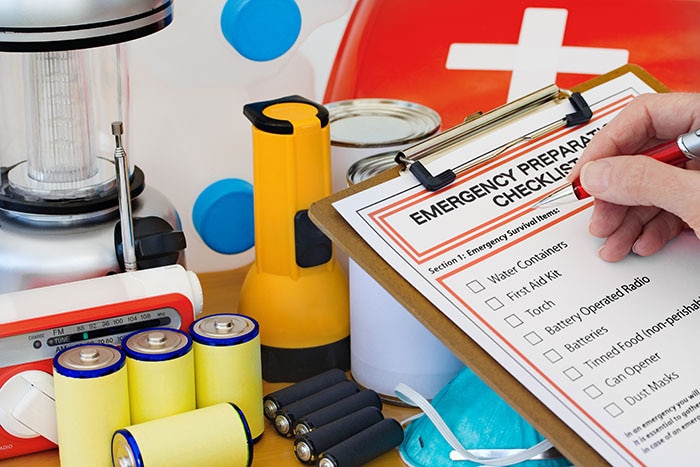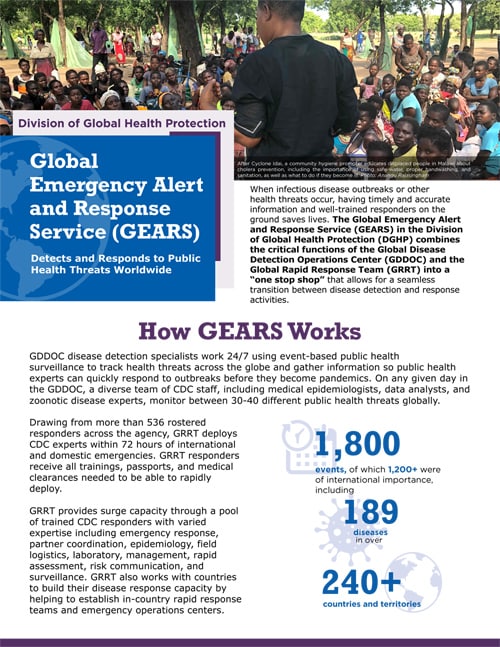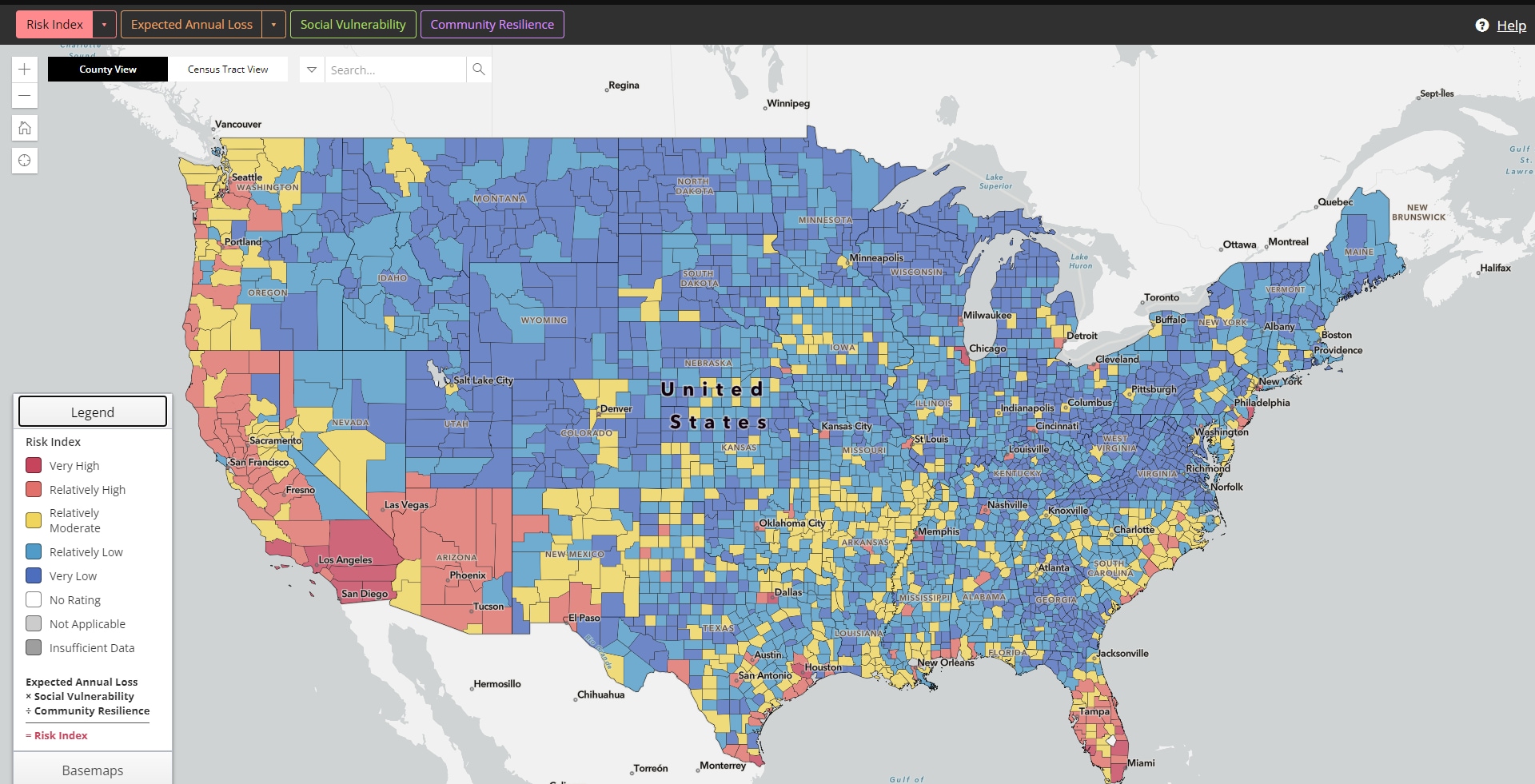Teen Newsletter: Emergency Operations
April 2022
The David J. Sencer CDC Museum (CDCM) Public Health Academy Teen Newsletter was created to introduce teens to public health topics. Each newsletter focuses on a different public health topic that CDC studies. Newsletter sections: Introduction, CDC’s Work, The Public Health Approach, Out of the CDC Museum Collection, and Teen Talk.
Watch the emergency operations Teen Talk.
A public health emergency is an event that can cause harm to a person’s health or to the health of a community. These events can happen at any time, anywhere and include:
- Outbreaks, such as COVID-19, Zika, Ebola and flu
- Accidental releases of industrial chemicals that can harm people’s lungs, skin, and overall health
- Intentional acts with biological, chemical, radiological, or nuclear agents
- Natural disasters, such as tornadoes, floods, wildfires, and hurricanes
Our country must be prepared for the next public health emergency. The ability to identify a threat before it poses a significant risk depends on a well-trained public health workforce. State, local, tribal, and territorial health departments must be ready to handle large-scale emergencies and to identify and respond to smaller emergencies and outbreaks. As COVID-19 showed, what starts locally can very quickly become a global emergency.
An Emergency Operations Center (EOC) brings together highly trained experts and state-of-the-art technology to coordinate resources, information, and crisis and emergency risk communication to strengthen our nation’s ability to detect and respond to public health threats.
Watch the video below to learn how an EOC 1) fits within the framework of an Incident Management System, 2) how it functions, 3) the benefits of establishing one, and 4) the importance of routine use in maintaining it.
There are two centers at CDC that are responsible for working on public health emergency operations.
- The Office of Readiness and Response (ORR) is America’s public health defense hub. ORR staff work alongside CDC peers, other federal partners, and state, local, tribal, and territorial health departments to continuously monitor for risks to the health of communities and the nation. When a concern is identified, they put decades of public health emergency expertise to work to get the right experts and resources in place to address the emergency and protect the health of Americans and people around the globe. Additionally, ORR fosters research and innovation in how to best prepare for and respond to public health emergencies.
There are three divisions under ORR:
- The Division of State and Local Readiness (DSLR) manages the Public Health Emergency Preparedness (PHEP) Cooperative Agreement, which supports preparedness nationwide in state, local, tribal, and territorial public health departments.
- The Division of Select Agents and Toxins (DSAT) oversees the Federal Select Agent Program, which regulates all entities that possess, use, and/or transfer biological agents or toxins that could pose a severe threat to public health and safety.
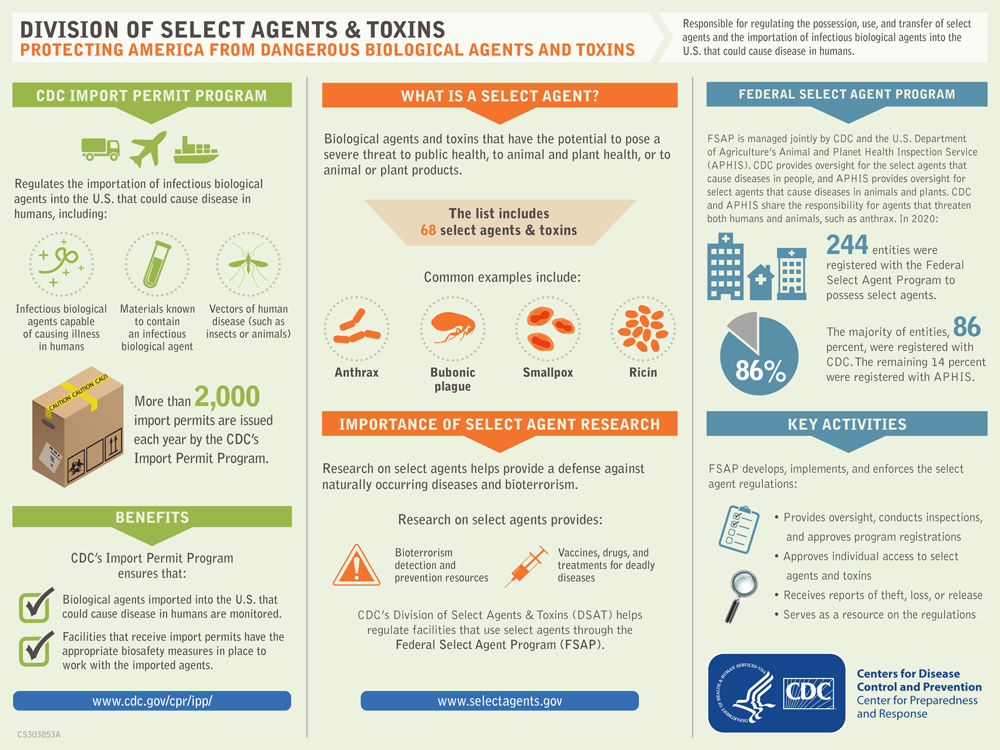
- The Division of Emergency Operations (DEO) coordinates CDC’s preparedness, assessment, response, recovery, and evaluation prior to and during public health emergencies. The CDC Emergency Operations Center (EOC) is staffed around the clock and provides worldwide situational awareness of public health emergencies.
The CDC EOC uses the National Incident Management System [3.3 MB, 133 pages] (IMS) to better manage and coordinate emergency responses. The EOC has responded to more than 60 public health threats, including natural disasters (e.g., hurricanes), foodborne disease outbreaks, environmental emergencies (e.g., Deepwater Horizon Oil Spill), and disease outbreaks (e.g., Ebola, Zika virus, and COVID-19). In addition, the IMS may activate for planned events (e.g., presidential inaugurations and Olympics taking place in the U.S.) to monitor for incidents that may affect the public’s health.
- The Center for Global Health (CGH) works to protect Americans from dangerous and costly public health threats, including COVID-19, vaccine-preventable diseases, HIV, TB, and malaria—responding when and where health threats arise.
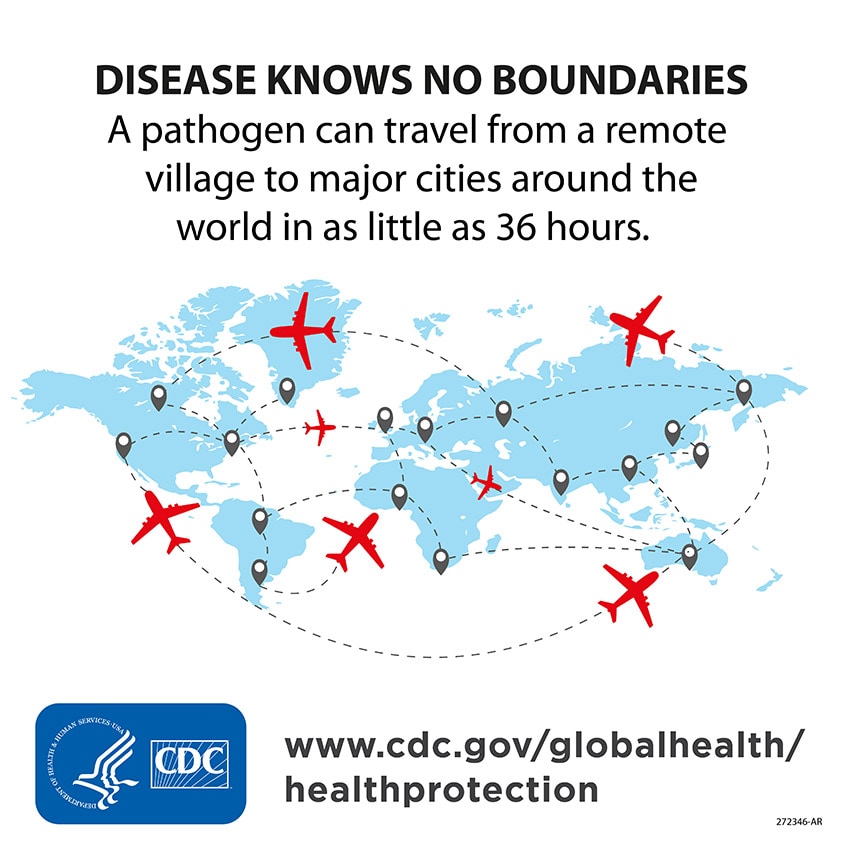
CGH’s Division of Global Health Protection (DGHP) supports CDC’s broader efforts to strengthen other countries’ public health emergency management capacity. DGHP collaborates with partners and other CDC experts to provide high-impact technical assistance to support sustainable public health systems. DGHP strengthens emergency response systems through a variety of programs, including:
- Field Epidemiology Training Program (FETP)
- Global Health Security Agenda
- Global Health Protection
- National Public Health Institutes Program
- Global Disease Detection Operations Center
Event-based surveillance (EBS) looks at reports, stories, rumors, and other information about health events that could be a serious risk to public health. The goal of EBS is to detect unusual events that might signal an outbreak. Information obtained through EBS can come from sources like reports in the media or rumors on an internet blog.
Public health problems are diverse and can include infectious diseases, chronic diseases, emergencies, injuries, environmental health problems, as well as other health threats. Regardless of the topic, we take the same systematic, science-based approach to a public health problem by following four general steps.
For ease of explaining and understanding the public health approach for emergency operations, let’s focus on CDC’s Emergency Operations Center (EOC).
- Surveillance (What is the problem?). In public health, we identify the problem by using surveillance systems to monitor health events and behaviors occurring among a population.
The EOC may be notified about potential public health threats through its watch desk, which fields calls from the public, clinicians, and state and local authorities. Notification may also come via public health partner briefings, field operations intelligence, or a worldwide declaration of a Public Health Emergency of International Concern. When CDC’s Division of Emergency Operations receives information about a potentially widespread threat, a team of subject matter experts decide whether to activate the Incident Management System (IMS).
- Risk Factor Identification (What is the cause?). After we’ve identified the problem, the next question is, “What is the cause of the problem?” For example, are there factors that might make certain populations more susceptible to diseases, such as something in the environment or certain behaviors that people are practicing?
As you learned above in the CDC’s Work section, the EOC can be activated in response to natural or human-made disasters, disease outbreaks, and other public health emergencies. There are three different levels of activation, depending on the scale of the event.
Level 3 is the lowest level of activation. CDC subject matter experts lead the response with their program staff. EOC staff may also assist with the response.
Level 2 involves a large number of staff from the relevant program area and from the EOC. Time-sensitive tasks and needs may extend beyond core business hours.
Level 1 is the highest level, requiring a 24/7 agency-wide effort (i.e., Hurricane Katrina in 2005, the 2009 H1N1 influenza outbreak, the 2014 Ebola outbreak, and the 2016 Zika virus response)
On January 21, 2020, CDC launched its agency-wide emergency response to the COVID-19 pandemic.
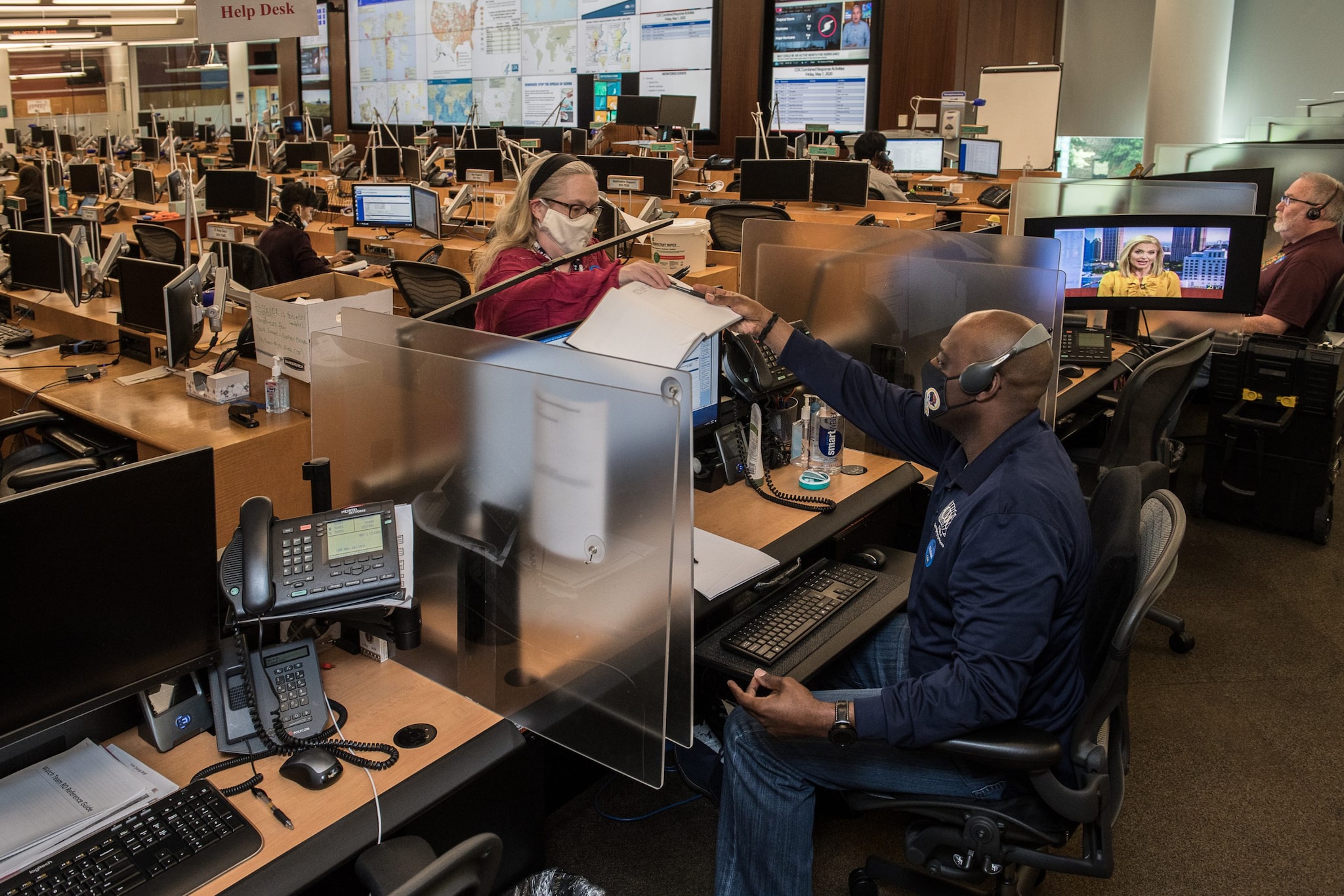
CDC staff working in the EOC during the COVID-19 pandemic response.
Each public health emergency has different risk factors. For natural hazards (i.e., earthquakes, hurricanes, wildfires) you can better understand what is driving your community’s natural hazard risk by using the National Risk Index.
- Intervention Evaluation (What works?). Once we’ve identified the risk factors related to the problem, we ask, “What intervention works to address the problem?” We look at what has worked in the past in addressing this same problem and if a proposed intervention makes sense with our affected population.
Even when there is no specific public health threat, the EOC has dedicated staff monitoring information, helping to keep us safe 24/7.
The mission of the Situation Awareness (SA) Branch in the EOC is to improve public health emergency planning and response. By analyzing critical information about many kinds of hazards that can affect public health, they turn this information into tools that leaders and responders can use to help people stay safer and healthier.
Red Sky was developed by the SA Branch to provide a simple-to-use and common platform to share critical information securely anytime, anywhere. The Red Sky dashboard has an intuitive interface that displays public health events on a global map, color coding them for severity. By simply clicking on an event, users are given a basic synopsis of the situation and they can access reports, data tables and other information.
- Implementation (How did we do it?). In the last step, we ask, “How can we implement the intervention? Given the resources we have and what we know about the affected population, will this work?”
When infectious disease outbreaks or other health threats occur, having timely and accurate information and well-trained responders on the ground saves lives.
During public health emergencies, staff in the EOC:
- Deploy scientific experts.
- Coordinate delivery of supplies and equipment to the incident site.
- Monitor response activities.
- Provide resources to state and local public health departments.
One great example is the Global Emergency Alert and Response Service (GEARS), it is a “one stop shop” that allows for a seamless transition between disease detection and response activities.
Drawing from more than 490 responders from across the agency, GEARS deploys CDC experts within 72 hours of international and domestic emergencies.
Using The Public Health Approach helps public health professionals identify a problem, find out what is causing it, and determine what solutions/interventions work.
This month’s Out of the CDC Museum Collection features stops in the permanent exhibition at the David J. Sencer CDC Museum, The Story of CDC.

CDC has played a key role in preparing the United States for public health threats that include natural, biological, chemical, radiological, and nuclear incidents. Response to public health emergencies in the late 1970s and early 1980s laid the foundation for the agency’s preparedness activities and programs today. How we manage both natural and human-made risks before, during, and after emergencies is part of contemporary society, and is a critical component of CDC’s public health mission. Below are examples of CDC’s emergency response work that are on display.

Love Canal
Three Mile Island
Mount St. Helens

Pre-9/11 Bioterrorism Planning

9/11

Anthrax
Did you know that CDC used an old auditorium as a center of operations during the anthrax investigations? This highlighted the need for a state-of-the-art permanent emergency operation center (EOC).
CDC’s first EOC, serving as a central control and coordination hub for epidemic outbreaks and other public health emergencies, opened in 2003 with the support of private donors. In 2005, a new, larger EOC was opened in CDC’s new headquarters building, where responses to emergencies from Hurricane Katrina to the current COVID-19 pandemic have been coordinated.
Watch the emergency operations Teen Talk.
